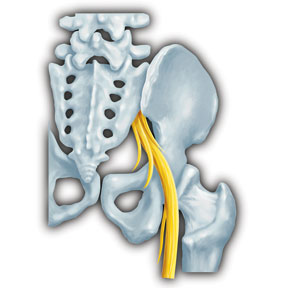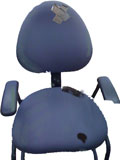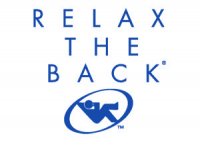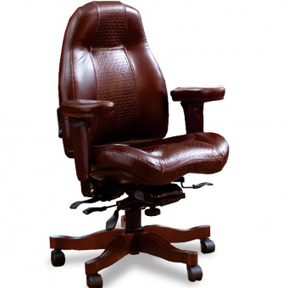Degenerative Disc Disease
Posted by relaxtheback in Uncategorized on March 31, 2011
Degenerative Disc Disease (DDD) affects many people in their 30s and 40s. Herniated discs often cause DDD, but it’s also the result of the spinal discs drying out. As we age, our discs lose moisture, causing them to collapse. Sports, exercise, and daily activities also contribute to DDD. Common symptoms include pain, stiffness, swelling, and numbness in the lower back.
The term “degenerative disc disease,” however, is misleading. It’s not technically a disease, but a condition. Likewise, the term degenerative applies to the disc, not necessarily the symptoms. Still, symptoms associated with the condition can be reduced with exercise and proper care.
Below are some treatment options if you have degenerative disc disease.
Lower back exercises. Stretches, toe-touches, and other exercises all help alleviate painful symptoms associated with DDD.
Physical Therapy. Physical therapy can improve symptoms noticeably. Physical therapists combine passive physical therapy and active physical therapy (exercise) to provide pain relief and increase function.
Quitting Smoking. Good circulation promotes healing, especially in the lower back. For patients with DDD who smoke, it is recommended to quit. Quitting smoking will help increase circulation and speed recovery for lower back pain.
Massage. Massage is wonderful for a host of ailments, but especially degenerative disc disease. Therapeutic low back massage can reduce muscle stiffness and increase range of motion, while also increasing blood flow. Relax The Back offers a wide range of massage products to help alleviate symptoms of degenerative disc disease, including massage chairs, heated massage beds, and massage cushions.
How to Get More Sleep if You Have Sciatica
Posted by relaxtheback in anatomic global mattress, back pain, mattresses, memory foam mattresses, memory foam pillows, neck pain, neck pillow, PureRelax Mattress, sleep on February 16, 2011
Sciatica is painful enough in your waking hours. At bedtime, however, it can be excruciating. Sciatica occurs when the large nerve running down each leg is compressed in your lower spine. Herniated discs, among other maladies, often cause this painful condition. Below are some tips on how to get better rest if you are a sciatica sufferer.
Side sleeping. If you have pain in one leg, try sleeping on the opposite side. This takes the pressure off the nerve, allowing you some relief. You can also place a pillow between your legs. For those with a herniated disc, this helps relieve the pressure the disc puts on the nerve root, which will lessen the pain.
Full body pillow. If you still have pain or discomfort sleeping with a regular pillow between your legs, then try a full-body pillow. Full-body pillows support not only the head, neck, and shoulders, but the hips and torso as well. It also allows for proper spinal alignment and promotes circulation, which is crucial for healing from sciatica.
Avoid sleeping on your stomach. Sleeping on your stomach may seem like a good alternative to side sleeping. At least you’re not aggravating your sciatic nerves by putting pressure on your hips and legs, right? Wrong. Sleeping on your stomach can cause an unnatural curve in your back and neck, and increase the pressure on both. For sciatic sufferers, and everyone else, it’s recommended to avoid sleeping on your stomach, which puts undue pressure on the lower lumbar area and neck.
Pressure relieving mattress. Traditional coil mattresses are known for creating painful pressure points and uneven contours. An overly firm mattress can also cause more discomfort than it relieves, contrary to popular belief. If sciatica keeps you up at night, it’s recommended to sleep on a pressure-relieving mattress. Tempur-Pedic mattresses, in particular, provide excellent body contouring support for sciatica sufferers. Our own line of PureRelax and PureFit mattresses are also effective in treating this condition. Whichever mattress you choose, just make sure that it conforms to your unique contours, rather than the other way around.
Stretch the piriformis muscle before bedtime. The Piriformis is a flat muscle in the pelvis region, near the back of the hip joint. This pyramid-shaped muscle has the sciatic nerve running through it, so massaging it before bedtime can ease sciatica symptoms noticeably. Try a gentle five-minute massage before going to bed for deeper, more restful sleep.
Sciatica can be a pain, but it doesn’t have to keep you from getting a good night’s rest. Although painful, sciatica does respond well to treatment. In fact, roughly 4 out of 5 people with sciatica get better with treatment. Try some of these tips and see if your symptoms improve over time.
For more information, please see www.RelaxTheBack.com.
Tips for Living with Fibromyalgia
Posted by relaxtheback in back pain, back support, mattresses, memory foam pillows, neck pain, sleep on February 1, 2011
Fibromyalgia is a common arthritis-related illness. Fatigue, insomnia, abdominal pain, stiffness, chronic headaches, dry eyes, muscle and joint pain are symptoms of this disease, which affects 12 million people in the US alone. Besides physical pain, there is a mental and emotional component as well. Many fibromyalgia sufferers experience social isolation, loneliness, and depression as a result of their condition.
Below are some ways to cope if you have fibromyalgia.
Get better sleep. Make sure your bedroom is free from distractions. TV, pets, tick-tocking clocks – all of these can throw off your sleep pattern. For reducing fibromyalgia-related insomnia, create a sleep environment that is calm, quiet, and at a slightly cooler temperature. Your bedding is hugely important for getting better sleep as well. A pressure-relieving mattress that reduces pressure points can be particularly beneficial. Tempur-Pedic specializes in these kind of mattresses, which conform to your unique contours in a way that traditional mattresses do not.
Exercise. Because of the pain and fatigue symptoms, it’s not uncommon for people with fibromyalgia to become unfit through lack of exercise. Aerobic exercise, however, is a good way to reduce pain and stay fit. Strenuous exercise, the kind that improves endurance and stamina, helps release endorphins into the blood stream, which provide feelings of well being. Endorphins also have an analgesic effect on tired, achy muscles. With regular exercise, you can curtail fibromyalgia symptoms noticeably.
Learn to say “no.” This may sound like an odd tip for fibromyalgia. However, learning to say no can help prevent you from feeling tired and overburdened. Life presents us with seemingly limitless demands on our time and energy, so it’s important to prioritize. Take time for the things you value, but trying to do everything can leave you feeling overwhelmed and exhausted. Keep in mind, too, that constant tiredness makes it harder to heal. To stay on top of fibromyalgia, learn to say no every now and then. Your body will thank you.
Heat therapy. Heat relaxes muscles and encourages blood flow, both essential for speedy healing. Good circulation also helps remove built up waste left by muscle spasms, a frequent fibromyalgia symptom. Perhaps the most welcome effect of heat therapy is pain reduction. Whether using a heating pad or a moist, warm cloth, heat therapy can relieve chronic aches and pains.
Meet others with fibromyalgia. Oftentimes, people with fibromyalgia feel alienated or depressed because of the severity of their symptoms. It can be difficult to talk about, so we recommend finding a fibromyalgia support group. Talking with others going through the same thing can provide a emotional boost. A support group can also be a great resource for pain-relief tips and encouragement. Many health care providers also endorse support group participation as a way to reduce stress and improve coping skills.
Coping with a Herniated Disc
Posted by relaxtheback in back cushion, back pain, back support, exercise, herniated disc on January 18, 2011
If you’re one of the millions of Americans with a herniated disc, then you know its painful symptoms. Leg pain, numbness, tingling, muscle spasms – all these can make standing or sitting for prolonged periods a real challenge. Luckily, there are numerous ways you can alleviate or improve your symptoms.
- Don’t ignore it. This one goes for guys especially. Men are more likely to ignore a herniated disc because they feel that they should just “tough it out”, no matter what kind of pain they’re in. To better cope with a herniated disc, acknowledge your pain and take the necessary steps to heal.
- Rest and relaxation. Get your rest. The body heals faster when you are well-rested. Time, and rest, help resolve the symptoms associated with a herniated disc. Try for at least eight hours a night of uninterrupted sleep.
- Exercise, exercise, exercise. There are a host of herniated disc exercises prescribed by doctors and health care professionals around the world. Exercises that increase balance, strength, and flexibility are excellent for improving the pain associated with a herniated disc. Others include spinal extension exercises, which increase the curve of the back away from the herniated disc. Bouncing exercises, in which you bounce up and down to increase oxygen to the discs, are also good for alleviating pain. Our FitBALL is particularly good for this type of exercise.
- Reduce your stress. Stress makes everything worse, so learn how to relax. Deep breathing exercises, meditation, and physical activity all help to reduce stress, clear your mind, and promote healing. Physical activity also releases a hormone called endorphins, which can promote a feeling of well-being.
- Ice and heat. Hot and cold therapy can help relieve the painful symptoms of disc herniation, while also reducing the pain from muscle spasms.
Get in Shape Tips for 2011 from Relax The Back
Posted by relaxtheback in exercise, Relax The Back on January 7, 2011
Getting in shape is a great (and perennial) resolution for the New Year. Below are some tips on how to look and feel your best in 2011!
Get back in the gym. Joining a gym or a weight-loss group can help you shake off the wintertime blues. Exercise at least 30 minutes a day – whether it’s swimming, walking around the track, or weight lifting – for better overall health. Also, it’s important to vary your workout routine. Change it up from week to week to stave off boredom and keep your workouts fresh. Relax The Back also has a great line of workout products that can be used indoors, including medicine balls, foam rollers, exercise balls and more!
Eat more green veggies. Your mother was right. Eat at least three servings (1 serving = 1 cup) a day of broccoli, kale, green beans, parsley, brussel sprouts or other dark green veggies to revitalize and rejuvenate your body. Spinach, collard greens, watercress and other leafy vegetables also make a wonderful complement to your average salad.
Turn off the TV. Your body was made to move! Activity helps promote healing, weight loss, and a clearer state of mind, so get off the couch. TV promotes a sedentary lifestyle (and absent-minded snacking), so limit yourself to shows you really want to watch. Even better – try a few exercises while you watch. For some TV time exercise, Relax The Back offers the Gripmaster, a hand exerciser that builds strength in the hands, wrist, and forearm.
Drink more water. It’s the stuff of life for a reason. Many people don’t know it, but oftentimes they’ll eat NOT when they’re hungry, but when they’re thirsty. If you eat slowly and drink more water, you’ll feel satisfied with less food. A good rule of thumb for proper water intake is to divide your weight in half and then drink that many ounces of water a day. For example, a 150-pound man should drink at least 75 ounces of water a day, or roughly nine 8-oz glasses.
Cut down on midnight snacking. Food consumed fewer than three hours before bed time has a habit of sticking around (usually around the mid-section). To keep the pounds off, avoid snacking after dinner.
Log your progress. Write down your fitness habits to track your progress. It’s one thing to think your fitness program is working and another to see exactly how much more you can lift, run, throw, or jump. Keep track of the strides you make to stay motivated. It will also remind you of the importance of persistence.
Don’t beat yourself up. There’s a big temptation to quit on New Year’s resolutions when they aren’t achieved quickly or in perfect succession. But don’t give up. Getting in shape and maintaining a healthy lifestyle is a marathon, not a sprint, and there will be a few potholes along the way. It may seem impossible at times, but with a little discipline, group support, and persistence, you’ll be amazed at how fit you can be!
Enter Our Ugliest Office Chair Contest for a Chance to Win a Luxurious Executive Chair!
Posted by relaxtheback in back pain, back support, computer chair, computer workstation, Relax The Back on December 3, 2010
Send Us a Photo of the Ugliest Chair in Your Office and Enter for a Chance to Win a Lifeform Ultimate Mid-Back Executive Office Chair!
A $2495 Value FREE, with your choice of material: Dream Weave, Simulated Leather, or Premium Leather!
Send us a Friend Request on Facebook (find us here: http://on.fb.me/gGNvU0) and then post your photo to our wall! We’ll announce the winner on Tuesday, February 1st, 2011!
Life’s too short for office chair envy! Enter for a Chance to Win Today!
Strain vs Sprain? What’s the difference?
Posted by relaxtheback in exercise, injury, Relax The Back, sprain, strain on November 23, 2010
The two terms seem interchangeable, but they are, in fact, very different things. Strains are injuries that only happen to muscles or tendons, which attach muscle to bone. For this reason, strains are also called pulled muscles, often occurring during sports or lifting heavy objects.
Strains are an acute injury (meaning they happen suddenly or with extreme sharpness), resulting from overstretching or over contraction. You’ll know it’s a strain by its symptoms. If you experience pain, weakness, limited range of motion, or muscle spasms, then you most likely have a strain, rather than a sprain.
A sprain, on the other hand, is an injury that affects your ligaments. Ligaments are the fibrous tissues, made of cartilage, that connect bones together. Sprains occur when ligaments are over stretched or torn, or when the surrounding joint is displaced from its normal alignment. Sprains have similar symptoms to strains, but differ in that they bruise and swell.
Sprains range in severity. Grade I injuries may only cause painful movement. Grade II injuries, however, happen when the ligament that is partially torn but still intact. If you have a Grade III, then you may have significant ligament tears, which cause immobility and even joint instability. Some common sprains affect the finger, wrist, knee, ankle, back, neck, hamstring, and groin.
So, although they sound similar, strains and sprains are not the same. In a nutshell, strains happen to muscles or tendons; sprains to ligaments, or the connective tissue between bones. Both can be painful, but their symptoms differ in significant ways. With strains, you’re more likely to feel pain or weakness. With sprains, you’ll see bruising and swelling.
Stretching for Back Care
Posted by relaxtheback in back pain, Relax The Back on October 27, 2010
Stretching Exercises
The 3 basics of good back care are doing daily extension stretches, strengthening your core muscles and supporting the lumbar spine. Stretching exercises are a great, low-cost way to stay in shape and keep your muscles limber. They can also clear your mind and increase your circulation, as well as provide a bit of fun. Below are some simple stretches you can do in the morning, noon, or night, while traveling or in the office.
Neck Stretches
Relax your arms at your sides. Breathe normally and then turn your head to one side. Hold for 5 seconds, then turn to the other side. Repeat this 4 times making sure to breathe at a relaxed pace. This stretch is particularly good for the muscles running along the side of your neck, but you can also stretch the back of your neck by slowly tilting your head forward, holding for 5 seconds and then tilting it back. For added flexibility, you can also try Dr. Riter’s Real-Ease Neck Support, in our Neck Therapy section.
Upper Back Stretches
If you have back pain, stretches are an excellent way to relieve tension and stiffness. To stretch your upper back muscles, lie on your stomach and prop yourself up on your elbows. Then slowly extend your back by straightening your elbows. Hold this position for a few seconds, until you feel a gentle stretch. Then, return to the first position and repeat.
Middle Back Stretches
To stretch your middle back, find an open space and stand with your fee shoulder-width apart. Place your hands on your hips and slowly twist your torso to the right, until you feel a stretch. Stay like this for 15-20 seconds and then rotate back to your original position. Stretch your other side by slowly twisting your body leftwards. Hold for 15-20 seconds and then return to neutral position.
In addition to your middle back, you can also stretch your arms, wrists and hands by interlacing your fingers with the palms out and extending them in front of you. Hold for 15-20 seconds, relax and then repeat. This exercise works well while using a FitBall Exercise Gym Ball, which focuses on core strength, balance and coordination.
Lower Back Stretch
For this one, find a sturdy chair without armrests. Push your posterior all the way to the back and then lean over gently to touch your toes. Try to feel the stretch in your lower back muscles and hold for a good 15-20 seconds. Then slowly come up, relieving the tension until you’re completely upright. Repeat 3-4 times. If you would like a deeper stretch, position your feet farther out in front of you. This stretch is good for reducing tension from sitting in a fixed position all day. For other back stretches, the Corestretch is a safe way to stretch muscles, tendons and ligament and offers a variety of and 10 length adjustments.
Calf Stretches
This calf stretch is called the “wall lunge.” Stand about a foot away from a wall, then extend one leg behind you. You may lean on the wall with your forearms but make sure both feet are flat on the floor. Then, lean into the stretch until you feel a gentle tension in your calf muscle. Hold for 10 seconds and then switch legs.
Stretches like these can increase circulation and improve flexibility. Stretching is also good exercise, which can elevate mood and keep your mind fresh for the million things on your daily to-do list. If you would like to learn more about stretching or convenient ways to relieve stress and muscle tension, please visit our Fitness and Therapy section at www.relaxtheback.com for more information.
How to Choose a Tempur-Pedic Pillow: What’s Your Sleep “Personality”?
Posted by relaxtheback in back pain, back support, ergonomic mattress, ergonomic pillow, mattresses, memory foam mattresses, memory foam pillows, neck pain, neck pillow, pillows, Tempur-Pedic on October 19, 2010
Known for their mattresses, Tempur-Pedic offers a line of quality pillows for every sleep position. If you sleep mainly on your side, then you’ll want to try Tempur-Pedic’s SidePillow. This pillow’s unique shape was developed by doctors to encourage proper head and neck alignment. Because of its ergonomic friendliness, it promotes deep relaxation, for long-lasting pain relief. The SidePillow also helps prevent snoring by providing improved alignment for your neck, head, and shoulders, which opens up your airway. For best results, rest your head in the center of the pillow. This keeps your chin away from your chest, further opening up your airways.
For particularly loud snorers, your sleep partner will be so thankful.
The BodyPillow is another great one for side sleepers. This pillow is 48”, so it’s a little longer than most models. Its long design, however, provides support for the entire body, making it an ideal pillow for expectant mothers. The TEMPUR material also makes it easy to shape it to your unique body contours.
For Back Sleepers
If you’re a back sleeper, you may want something a little more traditional. The Rhapsody Pillow comes in a conventional shape, with the same pressure-relieving material as the SidePillow. The Rhapsody cushions every contour of your neck, shoulders, and head with a super-conforming inner sleeve. If you have allergies, you can relax with this pillow under your head. It is allergen and dust mite resistant, with a washable cover.
If you have a stiff neck….
The NeckPillow, in particular, is recommended for those who need a more therapeutic sleep posture. The dual lobe design supports the curve of you head, neck
and shoulders for optimal spinal alignment. However, make sure you choose the proper pillow thickness based on your shoulder dimensions and sleeping position. Proper alignment and posture are absolutely essential for a good night’s rest, so if you’re interested in the NeckPillow, choose the proper pillow thickness according to height and width of your shoulders in your natural sleeping position.
Another pillow that can help relieve neck pain is the TEMPUR-Cloud. The Cloud is built for people who often wake up with a stiff neck or knotty shoulders. It’s an extra soft pillow that provides proper support for the head and neck. It’s designed to increase your relaxation and it got its name for a reason – after a few nights you’ll feel as if you’re sleeping on a cloud.
Designed to Fit Your Body
Part of what makes Tempur-Pedic pillows different is that they are designed for the human body. Their ergonomic friendliness can be especially beneficial if you have suffered an injury or have a chronic condition. In fact, their pillows are designed to complement their mattresses, from basic models such as the ClassicBed to the luxurious CelebrityBed. Whether you sleep on your side or your back, if you snore or have an injury, or if you just want to get a better night’s rest, Tempur-Pedic has a pillow for you.
If you would like to get fitted for a proper pillow, please visit your local Relax The Back store to receive a personal fitting by our staff who are trained in ergonomics, posture, and spinal disorders.











